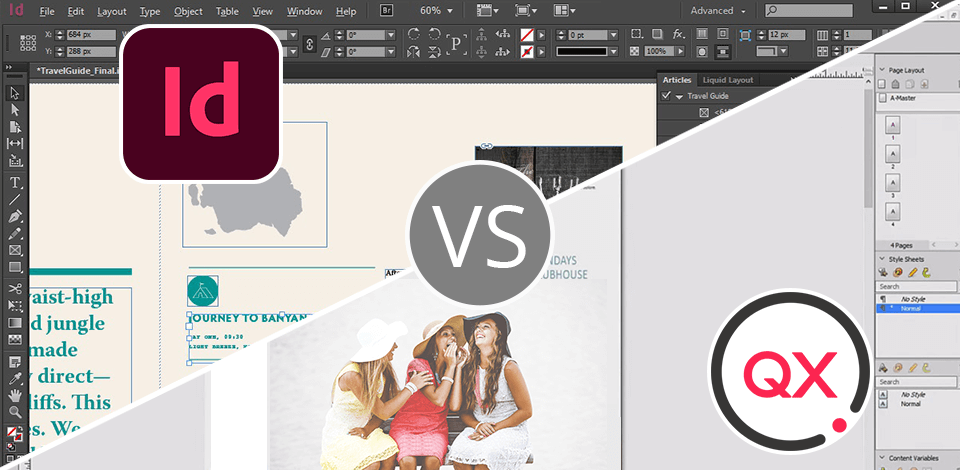
Since I have experience working with both tools covered in this review, I decided to pit Quark vs InDesign and determine which option is better for helping me create my ebook design.
I can confidently say that InDesign offers a more intuitive UI, simplifying the task of learning and mastering its tools. Additionally, it comes with a broader feature set, particularly when it comes to creating various digital layouts.
QuarkXPress is a fantastic solution if you want to preserve consistent formatting when working on large documents. I’d recommend choosing QuarkXPress for your printing needs and InDesign for digital documents rather.
Since I have some experience working with both tools mentioned in this review, I decided to put Quark vs InDesign head to head to see which one is better for assisting me in making my ebook design.
I dare say the user interface of InDesign is more intuitive and therefore friendly to learn the tools well. It also harbors a greater feature set in a wide variety of creation for a digital layout.
QuarkXPress is good if you want to have consistent formatting when working on large documents. I would recommend installing QuarkXPress for printing and InDesign for digital documents.
E-book, magazine, and poster layouts, as well as banner and marketing materials, are easier to be designed in InDesign. Moreover, saving much of my time in working on projects was the potential to integrate this desktop publishing software with all other existing Adobe products, such as Illustrator and Photoshop (which I adore).
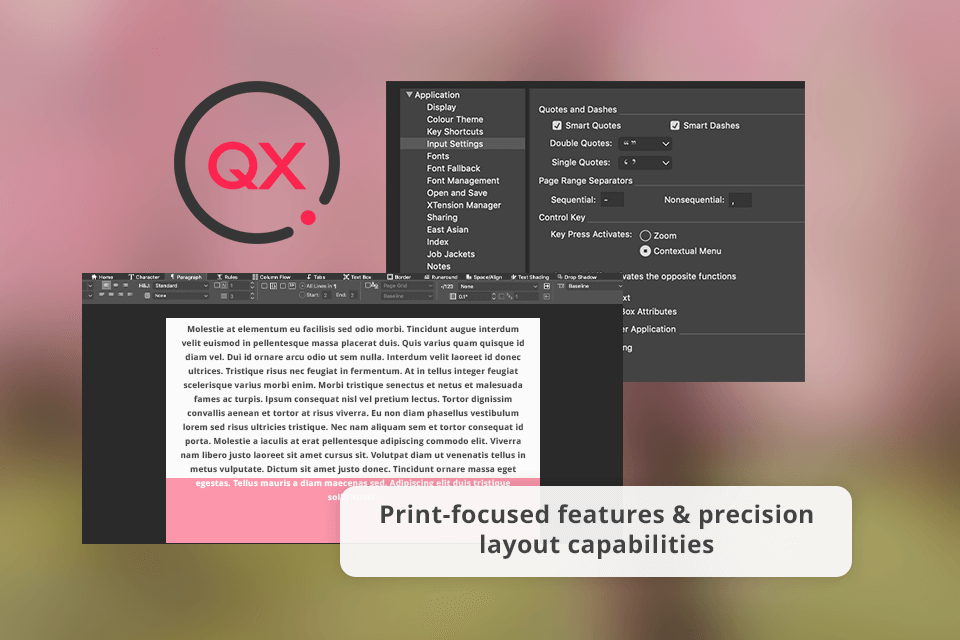
Quark provides a broad selection of intuitive design features that have allowed me to achieve pro-level results. I’m a particularly big fan of the available typography tools, layout options, and image manipulation functionality.
When pitting QuarkXPress vs Photoshop, I noticed that both applications have tools for editing, improving, and tweaking images, but the latter is far more advanced and efficient.
Thankfully, Quark is more than capable of letting me perform color correction, edit text, and utilize different fonts and formatting techniques to create content that matches my needs and taste.
The provided Auto Styling function is also very useful when you want to quickly apply a professional-looking style without having to tinker with dozens of parameters manually.
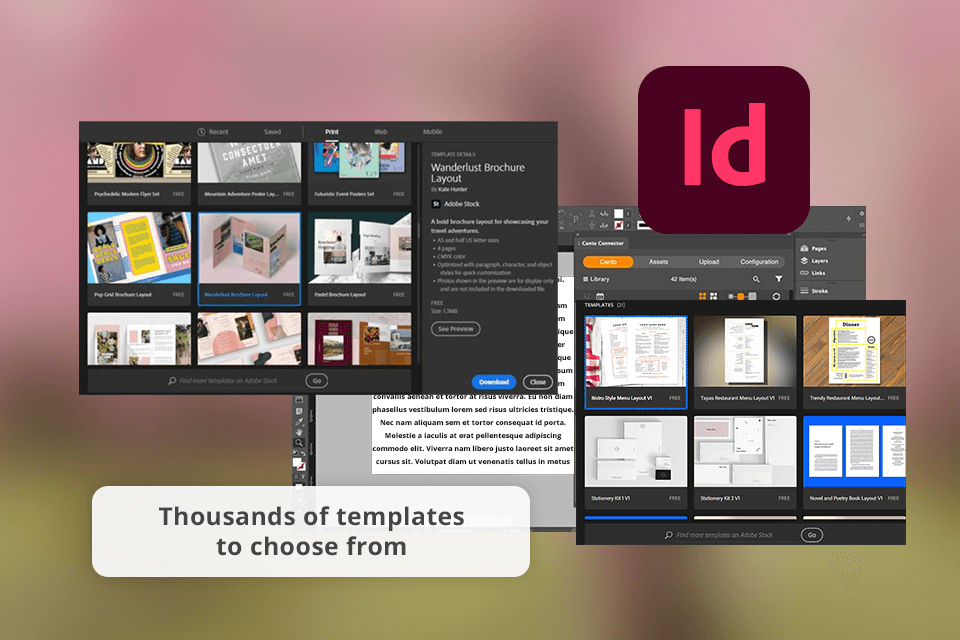
InDesign lets me produce high-quality layouts for different digital projects. Not so long ago, I used it to design an e-book and a poster for a customer who was highly pleased with its look. InDesign has also impressed me with how easy it is to personalize the look of each template to satisfy my needs. Such versatility is very important when working with tight deadlines and being determined to deliver the highest quality results possible.
InDesign provides a wide selection of styling features for fine-tuning text and different visual elements, allowing me to produce distinct, attention-grabbing designs. I frequently try out various formatting styles until I settle on the best option for each specific project.
The large number of available tutorials and guides made it easy for me to master InDesign’s functionality. For instance, I could design the layout for my e-book after only watching 3 tutorials.
Moreover, InDesign plugins made it possible for me to perform tasks like color-to-grayscale image conversions, similar element selection, and many others in just a few clicks.
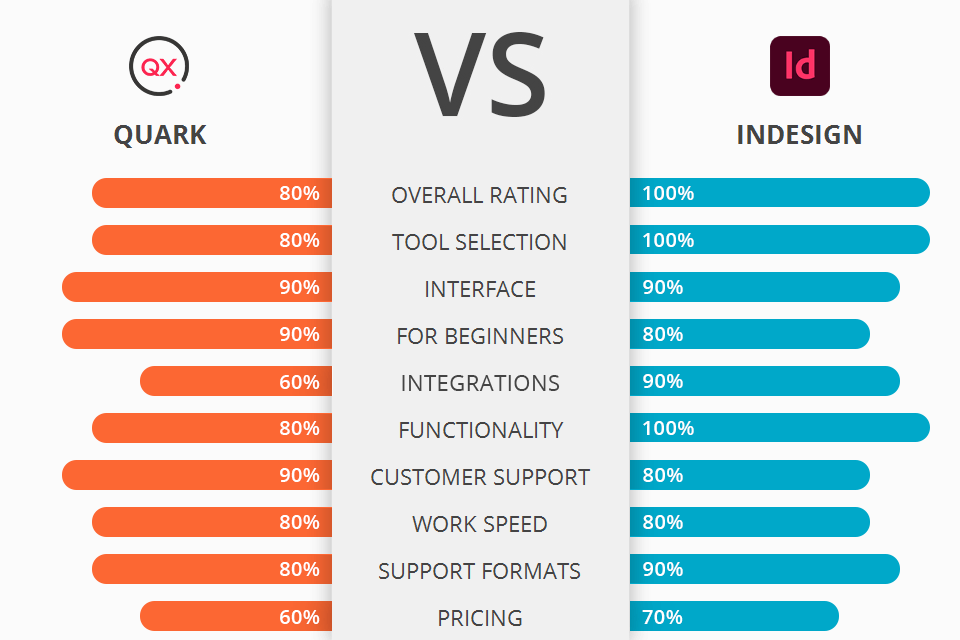
|
|

Quark
|

InDesign
|
|
Rating |
★★★★☆ 4/5 |
★★★★☆ 4.5/5 |
|
Best For: |
Designing print materials like magazines, banners, and posters |
Creating content for digital environments |
|
Free Trial |
✔️ |
✔️ |
|
Price |
$259/year |
$22.99/month |
|
Platforms |
Windows, Mac |
Windows, Mac |
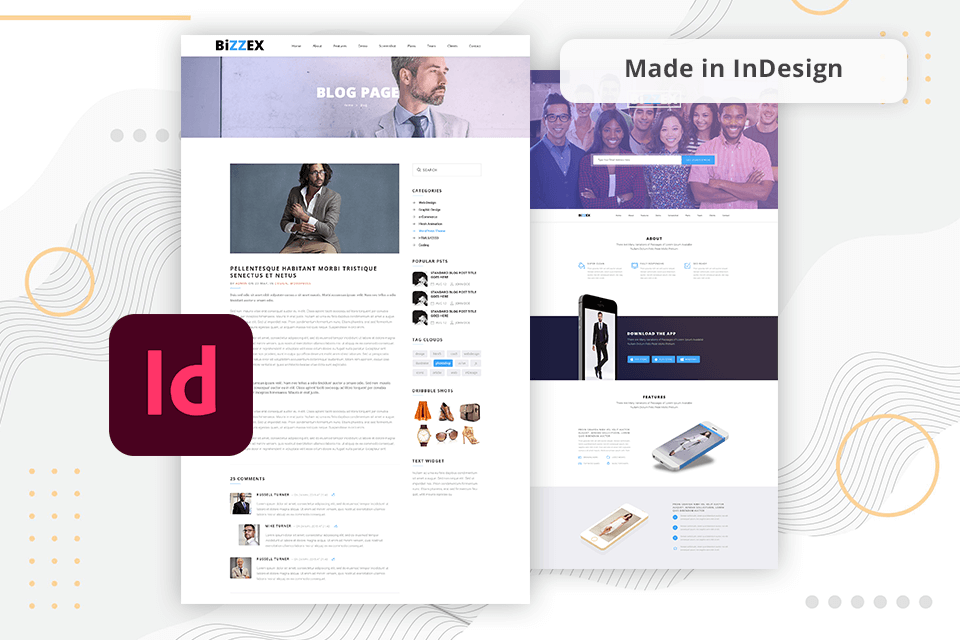
When it comes to the InDesign vs Quark battle, I consider the former to be better suited for designing layouts for magazines, website banners, and marketing materials. Moreover, InDesign’s PDF creation functionality has done wonders for streamlining my workflow when I was in the process of designing an e-book in this format.

QuarkXPress is perfect for print materials, including magazines, newspapers, flyers, billboards, collages, and any other similar projects that demand a high-quality design solution.
This InDesign alternative is also capable of creating digital layouts for websites and mobile applications, but its functionality isn’t as robust in this regard.
|
|

Quark
|

InDesign
|
|
Page layout tools |
✔️ |
✔️ |
|
Adjust Layout feature |
❌ |
✔️ |
|
Editing tools |
✔️ |
✔️ |
|
Templates |
✔️ |
✔️ |
|
Text formatting |
✔️ |
✔️ |
|
Publish Online feature |
❌ |
✔️ |
|
Real-time collaboration |
Limited |
✔️ |
| Pros | Cons | |
|---|---|---|
|
Quark |
Clean UI |
Inconsistent performance |
|
|
Supports all popular formats |
Can’t import layers from Illustrator |
|
|
Advanced page layout features |
Subpar integration with collaborative solutions |
|
|
Bookmark support |
|
|
|
Smart content aggregation |
|
|
|
|
|
|
InDesign |
Large range of tutorials and courses |
Some documents can take up a lot of space |
|
|
Plugins for expanding available functionality |
Requires a paid subscription |
|
|
Intuitive document management and formatting features |
|
|
|
Broad selection of styling options |
|
|
|
Seamless integration |
|
|
|

Quark
|

InDesign
|
|
Free Trial |
✔️ |
✔️ |
|
Paid Plan |
$22.99/mo |
$22.99/mo |
|
Best Offer |
Single-time purchase |
Creative Cloud All Apps |
|
|

Quark
|

InDesign
|
|
Windows |
✔️ |
✔️ |
|
Mac |
✔️ |
✔️ |
|
Linux |
❌ |
❌ |
|
Web |
❌ |
❌ |
I tend to use InDesign when making layouts for magazines, banners, posters, and different marketing materials. Moreover, when I was working on my e-book, I noticed that this software has a more streamlined workflow, ensuring I spend less time creating different layouts and formatting my content to fit a specific format.